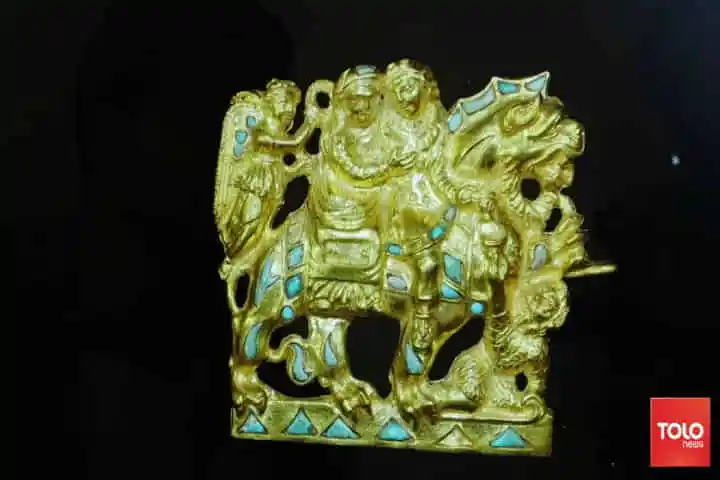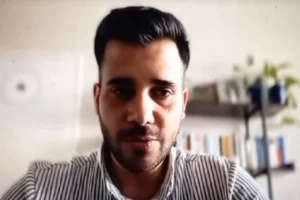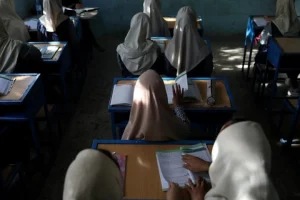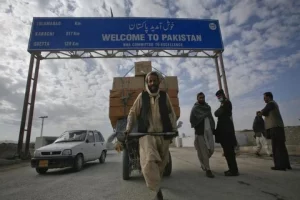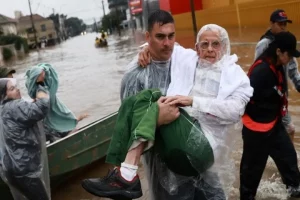The Taliban has launched a hunt to find Afghanistan’s 2000-year-old gold and other valuable artefacts claimed to be worth billions of dollars and dating back to ancient times.
Known as Bakhtar's treasures, these are Afghanistan's historical treasures and artefacts, which the Karzai government discovered in February 2004 at the presidential palace.
Now the Taliban is desperately looking for the trove. Ahmadullah Wasiq, deputy head of the cultural commission of the Taliban government told TOLO news that they have asked the relevant departments to find Bakhtar's treasures, also known as Bactrian treasure or Bactrian Gold.
“The issue is under investigation, and we will collect information to know what the reality is. If it has been transferred out of the country, it is treason against Afghanistan,” he was quoted as saying by Tolo News. “The government of Afghanistan will take serious action if this and other ancient items are moved out of the country.”
د باختر خزانې د ځای معلومولو لپاره هڅې پیل شوې ديhttps://t.co/WZgjc1Bsmn#طلوعنیوز pic.twitter.com/BvbpyuIO63
— TOLOnews (@TOLOnews) September 16, 2021
It was in 2004, that then president Hamid Karzai “discovered” the treasures, worth tens of millions of pounds, in sealed vaults under his own official residence.
According to The Guardian, “No one expected it to contain the treasure, dating from Alexander the Great's conquest of Afghanistan in 327BC. “We opened one box and saw the gold,' Karzai had said then, “Everything is safe and in its place”.

Ashraf Ghani, the then Finance Minister, said the treasure was probably the most important collection of antiquities in the world outside Egypt. Ghani said the vault had not been opened for decades despite efforts by the Taliban, who ruled Kabul from 1996 to 2001, torturing staff to reveal the safes , “they were beaten almost senseless but did not reveal it,” he said.
Soon after the perfectly preserved gold was verified it was decided that the Bactrian Hoard would be exhibited in various countries in Europe and in the United States.
In 1978, a year before the Soviet invasion in Afghanistan, the “hill of gold” locally known as Tillya Tepe in northern Afghanistan, was “discovered” by the Russian archaeologist Viktor Ivanovich Sarianidi who had identified the site as one of potential historical interest.
According to Sarianidi, the Tillya Tepe dates back to 2500 BC, making it contemporary with Mohenjodaro. He saw traces of subsequent settlements and noted its Hellenisation in 400 BC. He was excavating layers related to 100 AD when he discovered six royal graves. These were of Kushan princes and princesses decked out in Greek-style ornamented regalia. His team collected over 20,000 gold objects, catalogued them, and transported them to Kabul where the famous Kabul Museum became their repository.
Sarianidi led a joint Soviet-Afghan archaeological team in the winter of 1978-79, after Communists had seized power in Afghanistan and just months before the Soviet Army invaded the country, setting off two decades of conflict and turmoil. As the Soviet archaeological team dug through the graveyard, modern-day warriors appeared and started plundering the site. This was the territory of Uzbek warlord Abdul Rashid Dostam and his dreaded militia. Sarianidi writes that the two remaining graves were opened and looted by Dostum’s militias and all golds other artefacts were sold in the international black market “before we had a chance to make plaster copies of the pieces, before they could be studied or displayed, war and confusion closed on Afghanistan.”
According to the National Geographic Magazine which was involved in cataloguing the treasures, “it was the Bactrian Hoard. The treasure includes 20,000 gold, silver and ivory objects. They were made in different parts of the ancient world. The treasure dates back thousands of years and is a part of Afghanistan's history. Bactria is the name of an ancient region. The area included what are now many Central Asian countries. These include Iran, Afghanistan, Uzbekistan and Tajikistan”.

The trove of treasures Sarianidi unearthed were a remarkable testament to the region’s ancient history- coins with Roman emperor Tiberius etched on them, another with Buddhist imagery, and yet another depicting the Yuezhi ruler Sapadbizes, bronze Chinese mirrors, decorated Indian ivory plates, rings with Greek text, and more.
These priceless treasures, precious gold ornaments and jewellery were packed in sealed bags and were placed inside six safe boxes in Kabul Museum. Only a few people knew about it.
After a decade, in 1989, Afghanistan was at war with the Soviet army and the Kabul Museum, where the treasure was originally kept, had been shelled repeatedly in previous years. The then president of Afghanistan, Mohammad Najibullah Ahmadzai, officially closed down the museum in 1989 and transferred its holdings to three locations known as Bactrian Hoard safes, inside his presidential palace.
After capturing Kabul, the Taliban tortured Najibullah to find locations of these safes but did not succeed and eventually they killed him. During the two and half decades, few people knew where it was, and they kept it secret. One of the vaults was stored three floors down in the Central Bank vaults inside the royal palace compound, known as the Arg, now the presidential palace.
After their return to power, the Taliban is again looking for the treasures which are yet to be found. As far as the discovered treasures are concerned, they are safe with the international agencies. The Taliban is trying to find out under which agreement the previous governments have allowed to move the national assets out of Afghanistan.
According to TOLO news, last year in December 2020, the collection has been displayed in 13 countries in the past 13 years, bringing in more than 350 million Afghanis (more than $4.5 million) to the country’s treasury.






